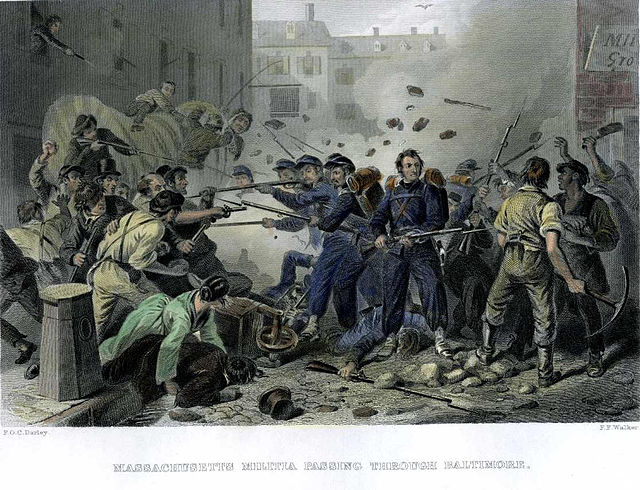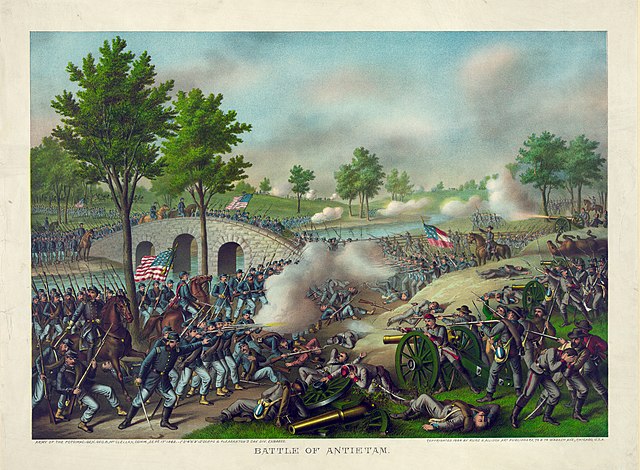Maryland in the American Civil War
During the American Civil War (1861–1865), Maryland, a slave state, was one of the border states, straddling the South and North. Despite some popular support for the cause of the Confederate States of America, Maryland did not secede during the Civil War. Governor Thomas H. Hicks, despite his early sympathies for the South, helped prevent the state from seceding.
Seal of Maryland during the war
8th Massachusetts regiment repairing railroad bridges from Annapolis to Washington.
The Baltimore Riot of April 1861
Governor Thomas Hicks
Maryland is a state in the Mid-Atlantic region of the United States. The state borders Virginia to its south, West Virginia to its west, Pennsylvania to its north, Delaware to its east, the Atlantic Ocean, and the national capital of Washington, D.C. With a total area of 12,407 square miles (32,130 km2), Maryland is the ninth-smallest state by land area, and its population of 6,177,224 ranks it the 18th-most populous state and the fifth-most densely populated. Maryland's capital is Annapolis, and the most populous city is Baltimore. Occasional nicknames include Old Line State, the Free State, and the Chesapeake Bay State. It is named after Henrietta Maria, the French-born queen of England, Scotland, and Ireland during the 17th century.
The bombardment of Fort McHenry in the Battle of Baltimore inspired "The Star-Spangled Banner".
The Battle of Antietam in 1862 was one of the bloodiest battles of the Civil War with nearly 23,000 casualties.
Ruin left by the Great Baltimore Fire of 1904
Great Falls on the Potomac River








